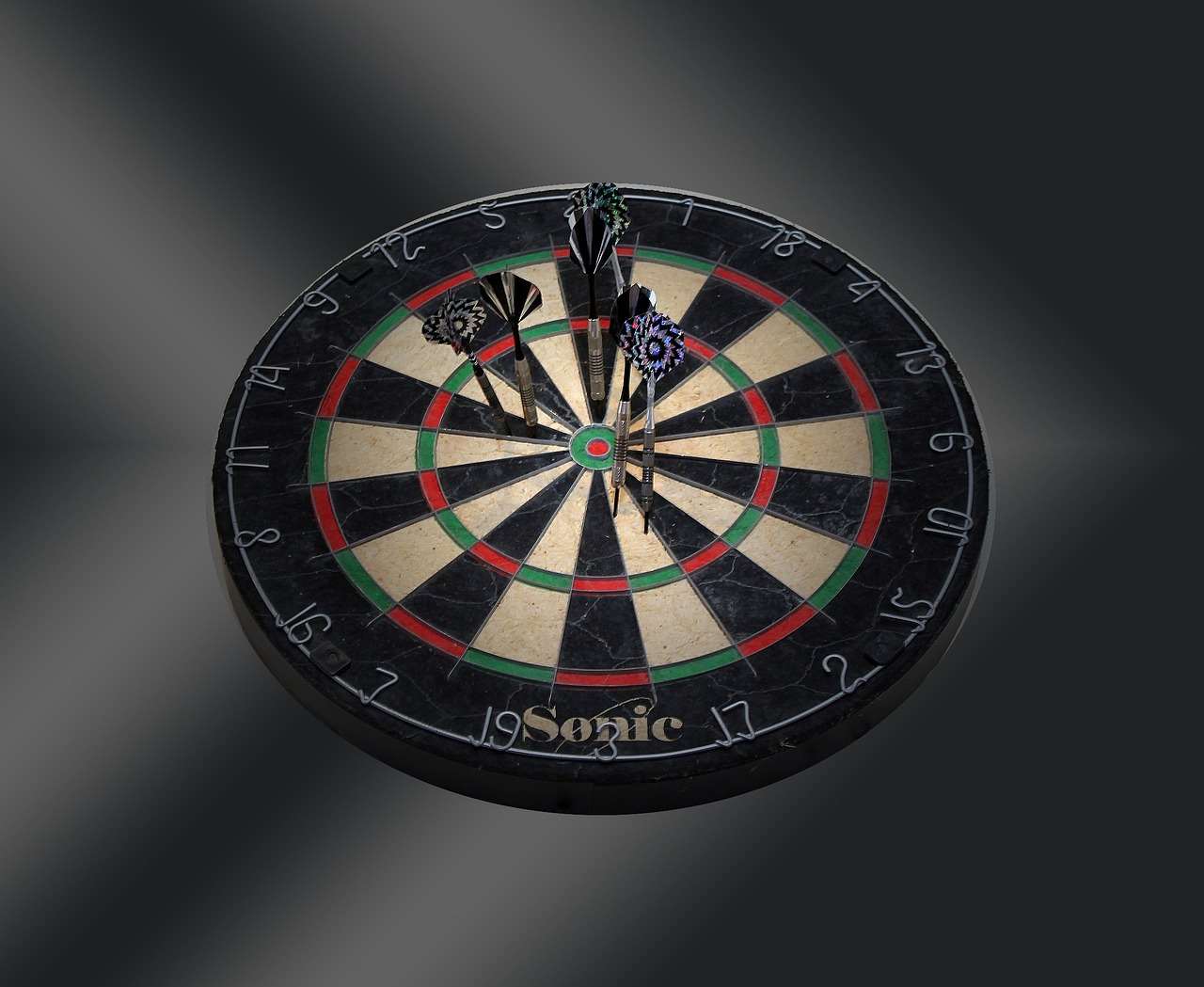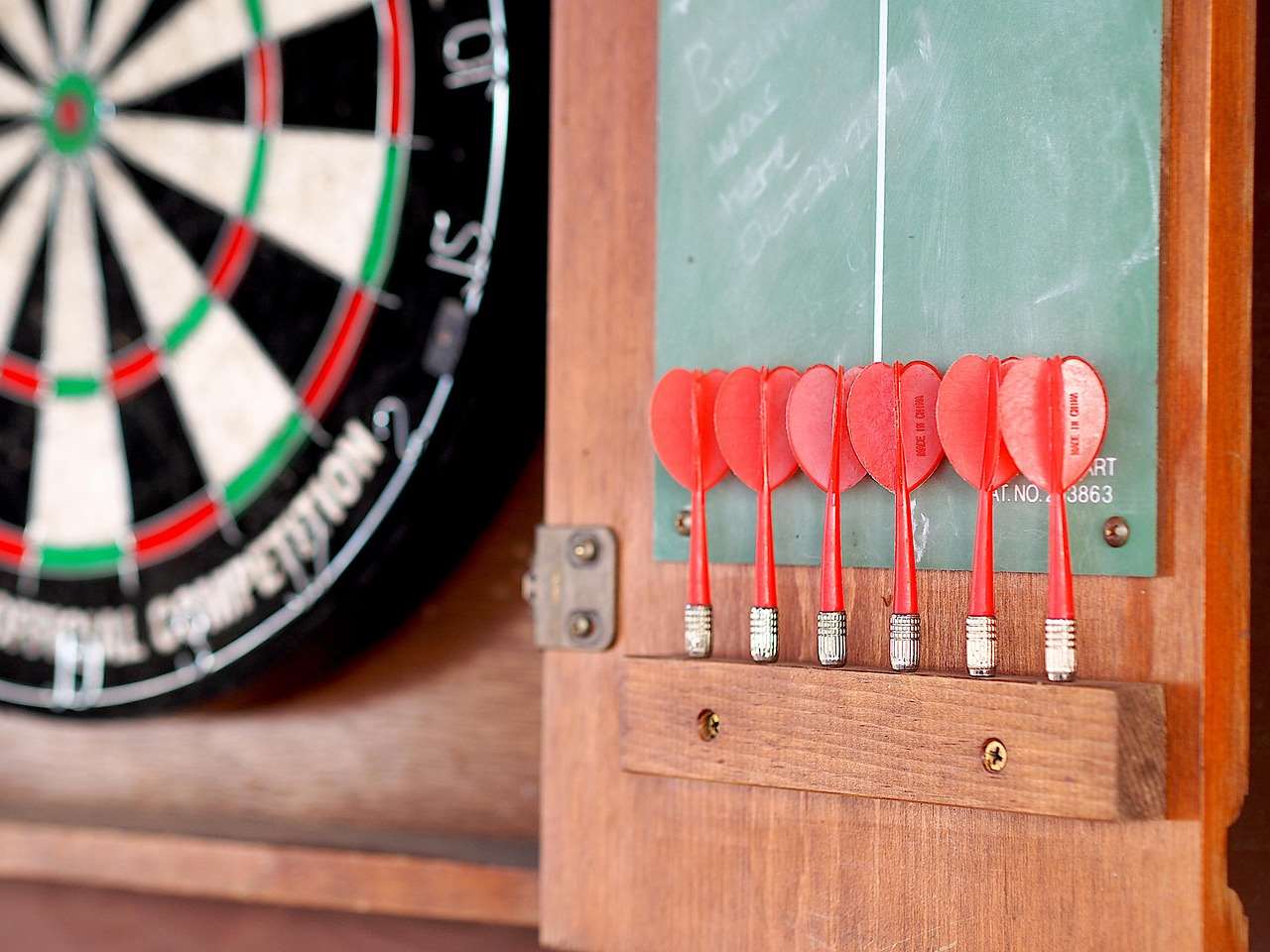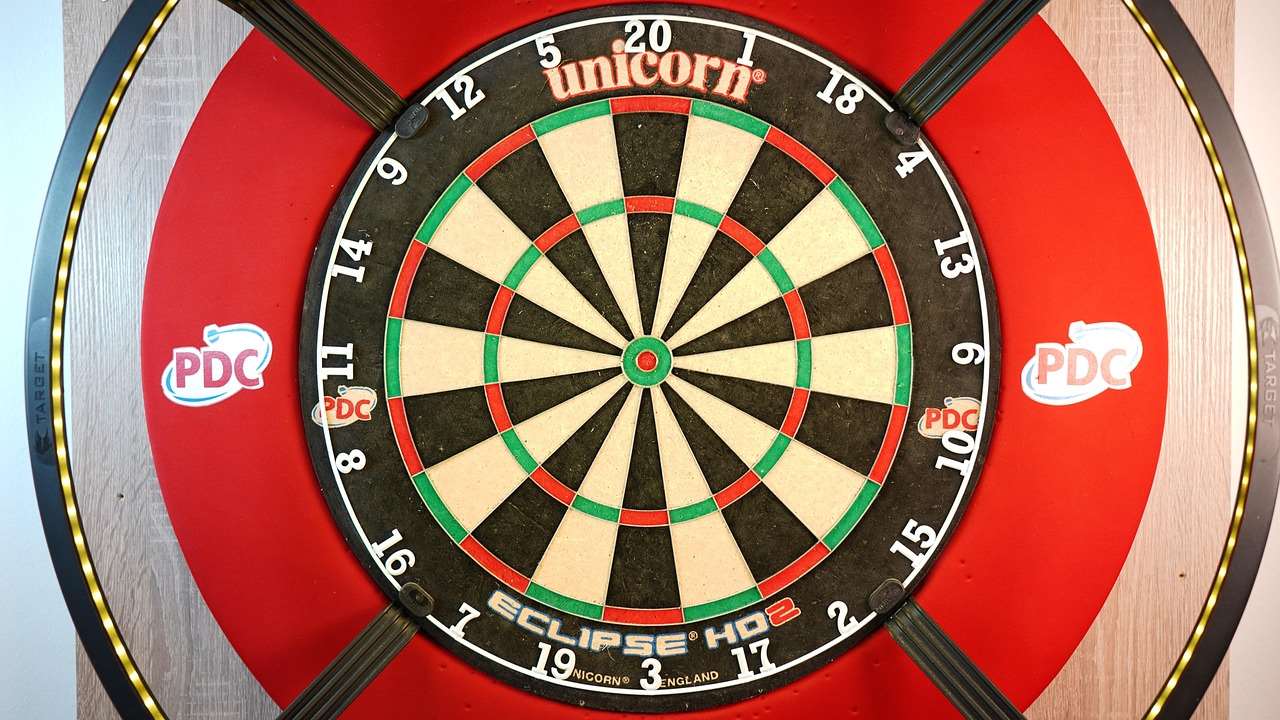The darts media rights history growth is a fascinating story of a niche sport transforming into a global entertainment product, driven by increased viewership and lucrative broadcasting deals. This article will explore the evolution of darts media rights, examining key moments, major players, and the factors that have contributed to its substantial growth, while also touching on streaming and international expansion.
⚠️ Still Using Pen & Paper (or a Chalkboard)?! ⚠️
Step into the future! The Dart Counter App handles all the scoring, suggests checkouts, and tracks your stats automatically. It's easier than you think!
Try the Smart Dart Counter App FREE!Ready for an upgrade? Click above!
The Early Days: Darts on Television
Darts’ initial foray into television wasn’t exactly a grand affair. It was a slow burn, starting in the 1970s, primarily in the UK. Early broadcasts were often limited and unsophisticated compared to today’s standards. The focus was mainly on the BDO (British Darts Organisation), showcasing tournaments like the World Championship. However, even these early glimpses of the sport on television began to cultivate a dedicated fanbase. The personalities of the players, the drama of the matches, and the accessibility of the game itself proved to be a winning formula, laying the foundation for future growth. The growing popularity of darts attracted sponsors, further fueling the demand for increased media coverage.

Key Broadcasters in the Early Era
The BBC and ITV were the mainstays of darts broadcasting in the early years. ITV’s coverage, in particular, played a significant role in popularizing the sport. The commentary style, often infused with humor and personality, resonated with viewers. These channels provided the vital platform needed for darts to reach a wider audience. The BBC, with its established reputation for sports coverage, lent credibility to the emerging sport. It’s important to understand the Business of Darts early on, as this informs how the media rights would evolve.
The PDC Revolution and Media Rights Explosion
The formation of the PDC (Professional Darts Corporation), originally known as the WDC (World Darts Council), in the early 1990s marked a turning point. A schism within the sport led to the creation of a new organization that focused on professionalism, increased prize money, and a more entertainment-driven approach. This had a profound impact on the darts media rights history growth. The PDC recognised the potential for greater commercial success and actively sought to enhance the spectator experience.
Sky Sports: A Game Changer
Sky Sports’ involvement was instrumental. The satellite broadcaster offered significantly more airtime and invested heavily in the production quality of its darts coverage. This included employing advanced camera angles, instant replays, and more dynamic commentary. The PDC, with its star players like Phil Taylor, quickly became a staple of Sky Sports programming. This partnership drove viewership and established darts as a major draw for subscribers. The increased exposure and improved presentation attracted new sponsors, creating a virtuous cycle of growth. The PDC Sky Sports deal worth millions, solidified the position of darts within the sports broadcasting landscape.

The Value of Darts Broadcasting Rights Explained
Understanding the value of darts broadcasting rights explained requires considering several factors. Viewership figures are paramount. The higher the ratings, the more attractive the rights become to broadcasters. The demographics of the audience are also important. Darts appeals to a broad range of viewers, making it desirable to advertisers. The length of the contract and the exclusivity of the rights also play a crucial role in determining the value. Moreover, the growth potential of the sport is taken into account. Darts has demonstrated consistent growth over the years, making it a relatively safe investment for broadcasters.
International Expansion and Emerging Markets
The PDC has actively pursued international expansion, holding tournaments in various countries around the world. This has created new markets for darts and increased the global demand for media rights. Europe, in particular, has seen significant growth, with countries like Germany and the Netherlands becoming strongholds for the sport. As darts gains popularity in new territories, the value of international broadcasting rights continues to rise. Viaplay and DAZN have also entered the market, acquiring rights in various European territories.

Darts Streaming Rights Cost and the Digital Revolution
The advent of streaming services has further transformed the darts media rights history growth. Platforms like DAZN and Viaplay have invested heavily in darts rights, offering fans alternative ways to watch the sport. The darts streaming rights cost is determined by the same factors as traditional broadcasting rights, but with an added emphasis on digital engagement. Streaming services are able to offer more personalized experiences, such as interactive features and on-demand content. This has attracted a younger and more tech-savvy audience to the sport. These digital media solutions allow for greater flexibility in broadcast times and enable viewers to watch on multiple devices, expanding the total viewership. This digital strategy is clearly part of how darts media deals work today.
The Role of Social Media and Online Content
Social media has also played a vital role in the growth of darts. Platforms like Twitter, Facebook, and YouTube have allowed fans to connect with players, share highlights, and engage in discussions about the sport. The PDC and individual players have actively utilized social media to promote events and build their brands. Online content, such as behind-the-scenes footage and interviews, has provided fans with a deeper understanding of the sport. This digital engagement has further fueled the demand for media rights.

Negotiation Darts TV Rights: A Complex Process
The negotiation darts tv rights is a complex process that involves multiple stakeholders. The PDC, broadcasters, sponsors, and player representatives all have a vested interest in the outcome. The process typically begins with the PDC assessing the value of its rights based on viewership figures, demographics, and market trends. Broadcasters then submit bids, outlining their proposed coverage and financial terms. The PDC carefully evaluates the bids, considering factors such as the amount of airtime offered, the production quality, and the promotional support provided. Negotiations often involve intense discussions and compromises, but ultimately, the goal is to reach an agreement that benefits all parties involved. The ITV darts broadcast deal demonstrates the competition for key darts events.
Factors Influencing Media Rights Agreements
- Viewership numbers: Higher viewership translates to increased advertising revenue for broadcasters.
- Demographics: A desirable audience profile attracts sponsors willing to pay a premium for advertising.
- Exclusivity: Exclusive rights command a higher price than shared rights.
- Contract length: Longer contracts provide stability for both the PDC and the broadcaster.
- Geographical coverage: Rights that cover multiple territories are more valuable than those limited to a single country.

Future Trends in Darts Media Rights
The future of darts media rights history growth is likely to be shaped by several trends. Streaming services are expected to play an increasingly important role, as more fans cut the cord and embrace digital platforms. The demand for international rights will continue to rise as the sport expands into new markets. The use of data analytics will become more sophisticated, allowing broadcasters to target specific demographics and personalize the viewing experience. The integration of virtual reality (VR) and augmented reality (AR) technologies could also create new opportunities for immersive fan engagement. Finally, expect that the process will need constant attention to the regulations and guidelines in darts broadcasting rights explained.
The Continued Growth of Darts as a Global Sport
Darts has come a long way from its humble beginnings in pubs and working men’s clubs. Today, it’s a professional sport with a global following, generating millions of dollars in revenue. The darts media rights history growth has been a key driver of this success, providing the platform for the sport to reach a wider audience. As darts continues to evolve and innovate, its media rights are likely to become even more valuable in the years to come.
Conclusion
The journey of darts media rights history growth showcases the sport’s incredible transformation from a niche pastime to a globally recognized entertainment product. Driven by strategic partnerships with broadcasters like Sky Sports, international expansion, and the embrace of streaming technologies, darts continues to captivate audiences worldwide. As the sport innovates and adapts to the evolving media landscape, its future looks bright. Explore related topics like the business of darts and the value of streaming rights to further your understanding. What are your predictions for the next chapter in darts media rights? Share your thoughts in the comments below!
Hi, I’m Dieter, and I created Dartcounter (Dartcounterapp.com). My motivation wasn’t being a darts expert – quite the opposite! When I first started playing, I loved the game but found keeping accurate scores and tracking stats difficult and distracting.
I figured I couldn’t be the only one struggling with this. So, I decided to build a solution: an easy-to-use application that everyone, no matter their experience level, could use to manage scoring effortlessly.
My goal for Dartcounter was simple: let the app handle the numbers – the scoring, the averages, the stats, even checkout suggestions – so players could focus purely on their throw and enjoying the game. It began as a way to solve my own beginner’s problem, and I’m thrilled it has grown into a helpful tool for the wider darts community.